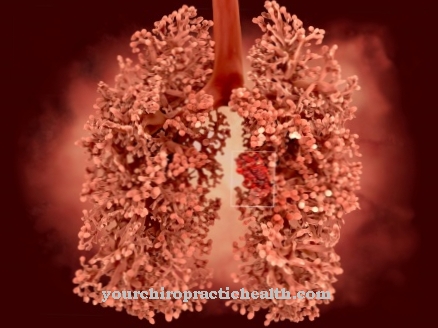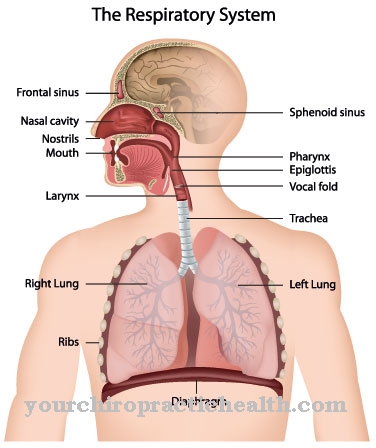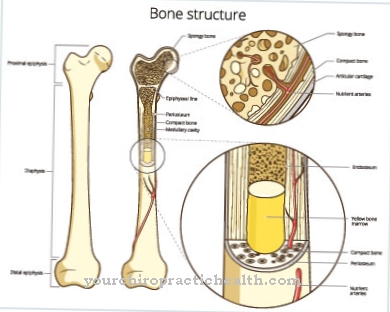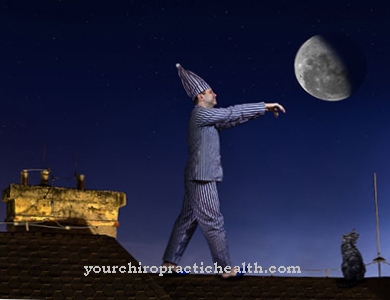In which Aase-Smith Syndrome it is a disease with a very low frequency. The syndrome is a hereditary condition that exists from birth. In some cases, Aase-Smith syndrome is also synonymous as Aase-Smith syndrome type I designated.
What is Aase-Smith Syndrome?

Basically, Aase-Smith syndrome is a special hereditary disease that rarely occurs. Typical symptoms of the disease include deformities of the skull bone, certain organs, and limbs. The affected people usually have a cleft palate and suffer from what is known as hydrocephalus.
The disease was first described by two medical professionals in 1968. In honor of these two people, the disease was named Aase-Smith syndrome. The two described the disease in a father of two children, one of whom was stillborn and the other died after a few months.
The hydrocephalus arises primarily as a result of the so-called Dandy Walker anomaly. In addition, the patients with Aase-Smith syndrome suffer from severe contractures of the joints. To date, about 20 cases of illness are known, which were Aase-Smith syndrome.
Aase-Smith syndrome, for example, is characterized by the fact that the sick person is unable to clench their fist. The fingers are significantly thinner than the average population. In addition, in the Aase-Smith syndrome, the fingers do not have any bones. The flexion furrows are also only slightly pronounced.
In addition, there are abnormalities in the ears. They often differ from the average appearance. Some patients are unable to open their mouths. In addition, some of the people with Aase-Smith syndrome suffer from clubfoot or heart defects. Sometimes a so-called ptosis occurs.
causes
The exact reasons for the development of the Aase-Smith syndrome have not yet been adequately researched. So far it is known that it is a hereditary disease. This means that Aase-Smith syndrome is caused by a genetic defect and exists from birth.
It has not yet been found out which genes are involved in the development of the disease. However, it is suspected that Aase-Smith syndrome is passed on to the offspring through an autosomal dominant inheritance.
The lack of knowledge about the causes of the disease can primarily be explained by the fact that Aase-Smith syndrome is one of the rarest diseases that exist. For this reason, relevant research studies or observations are lacking. The cause of the disease is a mutation on a certain gene and chromosome.
Symptoms, ailments & signs
In connection with the Aase-Smith syndrome, the affected patients suffer from numerous characteristic complaints. These include, for example, a cleft palate, difficult contractures of the joints and hydrocephalus. In the majority of cases, the comparatively thin fingers of the patients do not have any knuckles.
If there are ankles, they are severely underdeveloped. For this reason, it is not possible for the sick person to clench their hands into fists. The typical symptoms that appear in the hands in the context of Aase-Smith syndrome play an important role in differentiating the disease from Gordon syndrome.
Common features of the syndromes lie on the one hand in the cleft palate and on the other hand in the so-called arthrogryposis multiplex congenita. The mobility of the jaw is also reduced in many cases, so that patients have problems opening their mouths, for example. Sometimes the sick people also have defects in their hearts.
Diagnosis & course
Aase-Smith syndrome can be diagnosed on the basis of the typical symptoms and various examination techniques. Initially, the focus is on taking a meticulous anamnesis. As part of the patient consultation, the patient reports to the attending physician about his symptoms, living conditions and any possible genetic dispositions.
The doctor then examines the clinical signs using a variety of techniques. A thorough differential diagnosis is also particularly important. The focus is on Gordon syndrome, which is sometimes associated with similar symptoms. One difference, for example, is that the hands are normally developed. However, common to all symptoms is the cleft palate.
Complications
As a genetic disease, the Aase-Smith syndrome can only be treated to a limited extent. However, since the numerous malformations associated with it can lead to complications, doctors advise those affected to come to regular check-ups in order to be able to better observe the course of the symptoms.
Some of the symptoms such as cleft palate or heart defects can be remedied by surgery, which in turn can be associated with complications. Since patients with Aase-Smith syndrome can be prone to mental illnesses such as depression or acute inferiority complexes due to their hydrocephalus and malformation of the jaw and hand, they should also seek psychological help.
According to the current state of research, medicine cannot offer any more specific therapy or even a cure for the disease, which can be difficult to accept, especially for the parents of a patient in childhood.Most of the symptoms caused by the syndrome can lead to serious complications that shorten the lifespan of those affected.
An improvement in this initial therapeutic situation has not yet been guaranteed, as the Aase-Smith syndrome, with just 20 known cases, is one of the rarest diseases that doctors are aware of.
When should you go to the doctor?
Hereditary, but extremely rare, Aase-Smith syndrome cannot receive adequate treatment without a doctor's diagnosis. A thorough medical history is necessary to establish the diagnosis. Since there are currently practically no treatment options for many of the symptoms and deformities that occur, things are currently not looking good for the few affected.
Frequent visits to the doctor are normal for genetic mutations such as Aase-Smith syndrome. The problem with Aase-Smith syndrome, however, is that, thanks to the rarity of the disease, there are hardly any skilled doctors who can differentiate Aase-Smith syndrome from the similarly situated Gordon syndrome. It is also difficult to subject those affected to appropriate treatment.
The likelihood of serious complications that can result from Aase-Smith syndrome makes many doctor visits necessary for those affected. Doctors cannot always help patients. Regular check-ups with specialists for rare diseases are nevertheless advisable. In some cases, an improvement can be achieved surgically for the damage already present at birth. Psychotherapeutic interventions are advisable for the emotional sequelae of Aase-Smith syndrome.
It is currently primarily a task for geneticists to investigate the causes of the disease and track down the affected genes through research projects. Genetic engineering may lead to new treatment approaches. At the moment, the treatment options for the symptoms of the disease are rather poor.
Doctors & therapists in your area
Treatment & Therapy
Aase-Smith syndrome is basically a genetic disease. For this reason, treatment options are limited. Therapy or even elimination of the causes is in principle excluded, at least according to the current state of medical research.
Because the Aase-Smith syndrome as a hereditary disease exists from birth and is due to a genetic defect which cannot be influenced. For this reason, there are only treatment measures that treat the symptoms of Aase-Smith syndrome. Surgical interventions are possible, for example, in which certain malformations are partially or completely eliminated.
Aase-Smith syndrome cannot be treated more specifically. As a rule, the patients receive regular care and are encouraged to undergo check-ups and preventive measures at set intervals. Aesthetic corrections are especially recommended if the patients suffer psychologically from the malformations and are thereby restricted in their quality of life.
Outlook & forecast
Aase-Smith syndrome causes various malformations on the body. In most cases, the syndrome manifests itself as a cleft palate. As a rule, the affected person is also missing the knuckles, which can lead to restrictions in everyday life. Other knuckles are also underdeveloped and it is not possible for the patient to move the fingers in the usual way.
The jaw is also rigid and barely movable. This leads to severe discomfort when ingesting food and fluids and can lead to malnutrition. Most of the time, Aase-Smith syndrome also causes heart problems, so that the patient's life expectancy is greatly reduced.
Mental development is not influenced by the malformations. However, sometimes depression and other psychological complaints occur. Some of the malformations can be treated. In most cases, psychological treatment is also used.
prevention
There are no known options as to how to prevent Aase-Smith syndrome. Since the disease is extremely rare, there are hardly any research projects to better understand the disease.
Aftercare
Since Aase-Smith syndrome is a genetic disease, there are usually no special follow-up options available to those affected. The disease cannot be treated causally, but only purely symptomatically, whereby a complete cure is not possible in most cases.
If you want to have children, genetic counseling is advisable in order to explore ways of not passing the syndrome on to your descendants. The individual malformations of the syndrome are treated with the help of surgical interventions. The person affected should take it easy after the surgery and not expose themselves to unnecessary stress.
Sports activities should also be avoided after such an intervention. The exact treatment depends very much on the severity of the Aase-Smith syndrome and the doctor of the malformations. As a rule, loving and empathetic care for the patient by relatives and friends also has a very positive effect on the course of the disease and can avoid depressive moods or other psychological complaints.
Contact between the affected person and other patients with Aase-Smith syndrome can also be useful, as this can lead to an exchange of information. The life expectancy of the person affected may also be restricted by the syndrome.
You can do that yourself
Aase-Smith syndrome is extremely rare. Most medical professionals do not experience this disease in their careers. The first challenge for those affected is to find a qualified doctor. Even if there is otherwise great trust in the family doctor or pediatrician, their expertise should be critically questioned and a specialist should be found and consulted with the help of the health insurance company or the medical association.
The often very conspicuous external appearance that is associated with regular discrimination in everyday life and social isolation is a great burden for those affected. Patients who suffer mentally should definitely consider psychotherapy. Exchanging ideas with other people affected is also helpful. Since Aase-Smith syndrome is extremely rare, there are no support groups. Affected people can join groups with whom they do not share the underlying disease, but the symptoms and the resulting restrictions in everyday life. This can also help the parents of sick children to cope better with the situation.
Aids that have been developed for people with paralysis or amputations can also be very useful for other coping with everyday life, for example driving a car, climbing stairs or opening cans, bottles and similar tasks. Information about which aids are offered is provided by the health insurance companies and the manufacturers on their homepage.

.jpg)




.jpg)


















.jpg)

.jpg)
